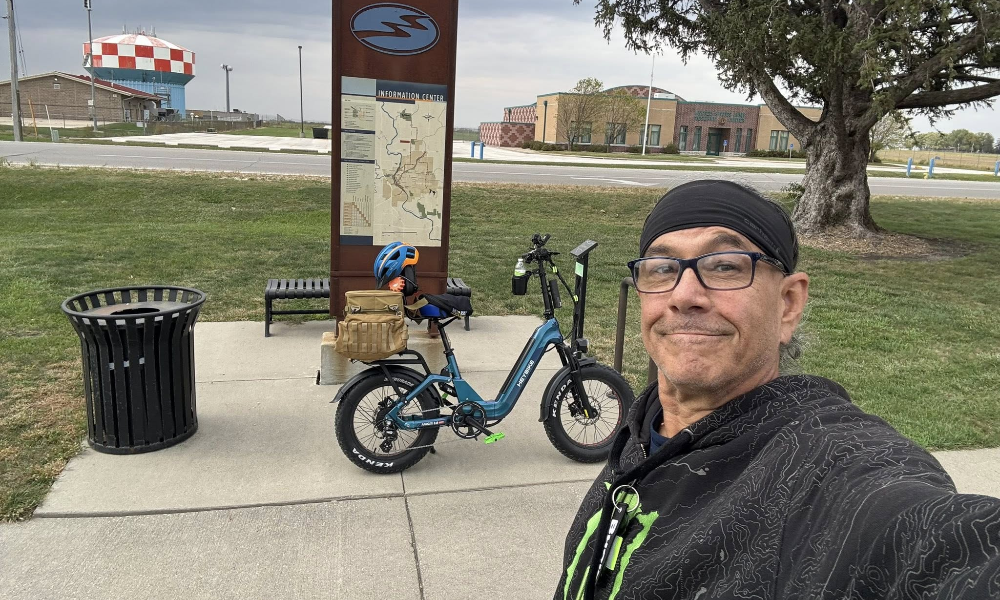Mountain biking has become an increasingly popular outdoor activity, and as technology advances, so do the components of the bikes themselves. One of the most important components, the brakes, has seen significant improvements in recent years.

How Does Disc Brake Works?
Disc brakes operate simply. When applied pressure, standard V-brakes hold the rim with the brake pads. The bike slows down and stops due to the friction between the pad and the rim, which transforms the bike's kinetic energy into heat energy.
The disc brake operates in a very similar manner. It does not, however, fasten to the rim. In its place, a spherical disc is attached to the wheel hub. The hydraulic or mechanical brake system is connected to the fork calipers. The brake calipers compress when the brake lever is depressed, touching the brake pads to the disc at the bite point.
Hydraulic Disc Brakes vs. Mechanical Disc Brakes
Both brakes and the bikes are often less expensive with mechanical disc brakes than mountain bike hydraulic disc brakes. You can install both types of disc brakes on a bike that can accommodate them. But doing so can be time-consuming and expensive because hydraulic disc brakes call for hydraulic-specific levers and need to be cut and bled if they are to be installed on a bike with internal routing.
Since mechanical disc brakes employ wires and do not need any special tools, they are much simpler than other brakes, albeit they can be more complex to set up and are more prone to damage. Although both mechanical and hydraulic disc brakes on mountain bikes surpass rim brakes, hydraulic disc brakes have higher modulation and stopping force.
Hydraulic discs for mountain bikes are more effective and perform better. Compared to a steel cable, which is more likely to wear out, especially if it is exposed to the elements, the fluid system is far more effective. Mud and dirt can enter mechanical disc brakes even without a cut or hole in the housing.
Unlike hydraulic disc brakes on mountain bikes, which have two moving pads, many mechanical disc brakes only feature a single piston that presses the disc against the static interior pad to provide the force.
Mountain bike Hydraulic disc brakes are very dependable, but maintenance is much more complicated because the fluid-driven system often requires specialized equipment and high skill. It takes some practice to repair your hydraulic disc brake system at home unless you are a reasonably competent bike technician.
What to Consider When Buying Mountain Bike Disc Brakes
Rotor Size
Larger disc brake rotors are heavier, but they put more power on the tire and have a greater surface area to cool off on prolonged descents, keeping them functioning at their best. The size of the rotors tends to increase as a bike becomes more gravity-oriented.
Some cyclists utilize a combination of rotor sizes, placing a larger one up front for more braking power and a smaller one in the back to reduce weight.
Four Pistons vs. Two Pistons
Four-piston calipers, also known as four-pot brakes, were once just an option for gravity riders; everyone else would stay with two-piston calipers, also known as two-pot brakes.
As trail mountain bikes have become more powerful and the down-country bike category has expanded, four pistons have gradually pushed their way into the mainstream because they provide more braking power and better heat dissipation.
Naturally, two-piston brakes still possess a ton of power. If you prefer a simple system with fewer pistons that could become stuck or malfunction, less weight (although this is minimal), and a lower cost, then do not discount them.
Lever Adjustment
Many brakes have reach adjustments, which let you alter the lever's distance from the bar to accommodate different hand sizes. Some allow you to change the amount of lever-free travel before the pad engages with the rotor by adjusting the bite point (or free stroke). It may be tool-driven or tool-free.
Brake Pads Material
Many disc brake pads are made of organic materials like rubber, glass, and resin. Although they provide a fair bite from the cold, they can lose power when overheated and quickly wear out. Sintered pads can sound harsh because there are more metallic shards in the compound, but they wear considerably better and do not overheat as much.
Pads Removal
If the pads are replaceable or cleanable from the top of the caliper, no need to remove the wheel is necessary. Even if you do not need to do this frequently, it is beneficial and much simpler when you do.
Brake Fluid
Mineral oil or DOT fluid is used to drive the pistons in hydraulic brakes. DOT fluid needs to be handled with great care than mineral oil and is terrible for the skin and paintwork, but it handles water absorption better. Both are efficient, but you should change them frequently for maximum benefits.
Conclusion
In this article, you have learned the differences between the two types of brakes, how they work, and the features of mountain bike disc brakes.
It is undoubtedly a wonderful stroke of luck to have the best mountain bike hydraulic brakes because it allows you to ride with increased confidence and enjoy how simple it is to slow down rapidly. MTB hydraulic disc brakes offer more comfortable braking than mechanical disc brakes.
Latest Stories
3000 Miles of Pure Joy: Greg’s Story with the Heybike ALPHA | Heybike Community
At 68, Greg conquered 3000 miles on his Heybike ALPHA ebike through Minnesota's trails. Every ride brought him fun, fitness, and freedom!
Freedom on Two Wheels: Ryan's Thrilling Rides on Mars 3.0 | Heybike Community
Ryan Davis shares his riding story on Heybike Mars 3.0 ebike. Have a look at his all-terrain adventures to see how the Mars 3.0 brings him true freedom.
From Walker to Rider: Darrel Rediscovering Youth and Joy on Ranger 3.0 Pro | Heybike Community
At 59, Darrel Abbe found youth and joy again riding the Heybike Ranger 3.0 Pro electric bike with his wife. Explore their story and the thrill of e-biking.



Share:
What's Carbon Fiber Bike Frame
About Electric Bike LCD display